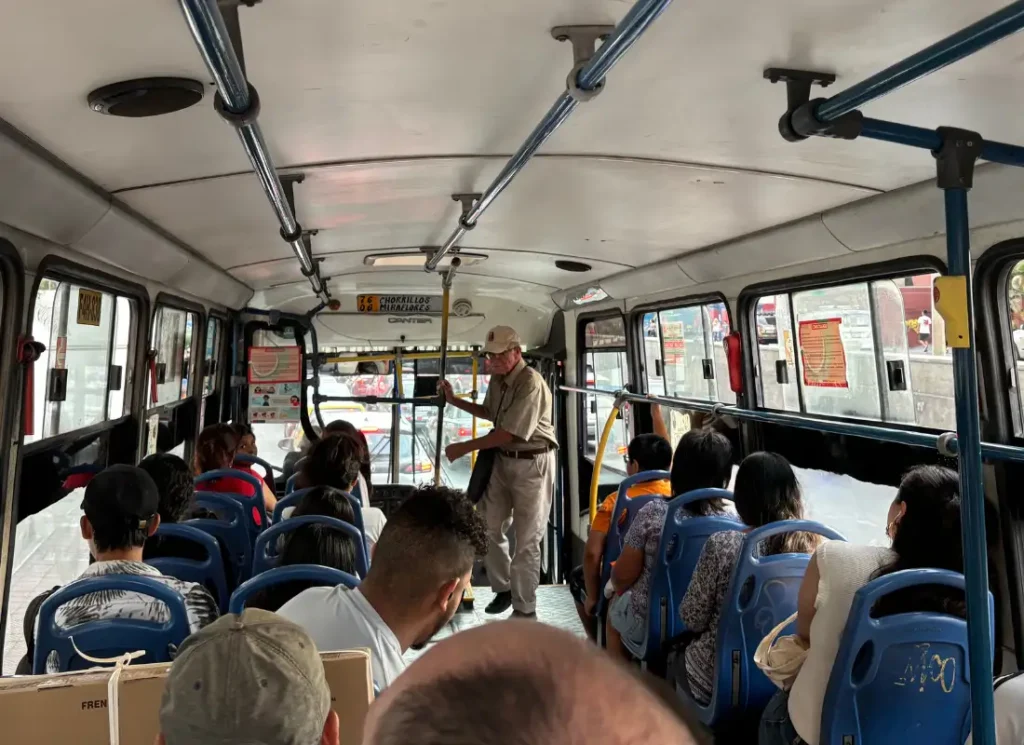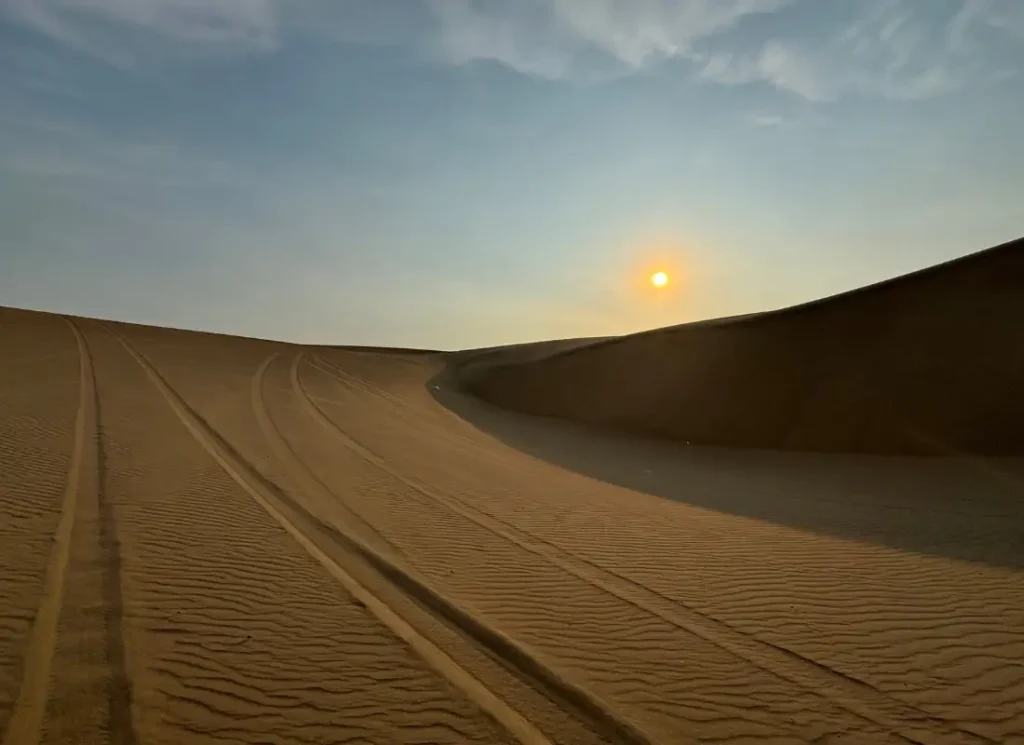If you’ve looked at any of my guides to creating a Peru itinerary, you’ll know that I’m a fan of options. It’s not in my nature to say “this is exactly how to do it”, and my Peru itineraries are either just guides to planning your own itinerary, or give you plenty of options to adapt to your own schedule and what you want to do there.
And, like always, this guide to the backpacking route in Peru is not meant to be a “this is exactly what you should do when you’re backpacking in Peru” kind of guide. I’m just here to write down everything I know, and the rest is up to you!
In my opinion, all of the best places on the Peru backpacking route follow the coastline from Lima to Arequipa, with the exception of Cusco, of course. I visited almost all of these places when I was backpacking in South America this year, so I’ll give you the lowdown on each one.
I also always say this: if I recommend the place or hostel that I stayed at, it’s because I liked it. I don’t like to go around badmouthing places unless they’re really bad, so if you see that I haven’t recommended an accommodation, that’s because I don’t want to recommend where I stayed.
One of the best things about backpacking in Peru, for me, was the people. Not just the locals, who are lovely, helpful and so willing to share their culture with you, but also the other travellers I met along the way. Although, I could say that about most of the countries I visited. Backpacking is special because you get to meet so many people from all walks of life, and if I were you I would take this into account. And, by that, I simply mean to stay flexible. Keep this backpacking route in mind and know that most of the stops are worth visiting, but be open to change if the mood strikes you!
🇵🇪 More on Peru: 24 Unmissable Landmarks in Peru
*Just so you know, we sometimes make a small commission on purchases made through some links on this website, at no extra cost to you.

Things to Consider Planning Your Peru Backpacking Route
Altitude Sickness
If you’ve read my previous articles on Peru, you’ll be thinking “oh, not this again”. It might be a good idea for me to write a whole article about the altitude in Peru and then link it here, but for now, I shall have to repeat myself! Flying into Cusco straight from Lima is generally not a good idea. Cusco is at high altitude, and even if you are used to it, you could get sick.
A great thing about backpacking is that, usually, you can take your time, and work your way up to higher altitudes by going to Arequipa first (around 2,500 metres), acclimatising for a few days, and then heading up to Cusco (around 3,400 metres). This also works if you’re skipping Cusco and heading straight into Bolivia (but… don’t do that, unless you’ve been to Cusco before, because Cusco is great).
Anyway, consider yourself warned about altitude sickness in Peru! The best way to beat it is to climb to high altitude slowly and let your body adjust along the way.
Taking Overnight Buses
If you’re a backpacker, hopefully you’re already on board with taking overnight buses. You can book them privately with organisations like Peru Hop, or take public transport. I took several overnight buses on Peru’s public transport and felt totally safe doing so (although I’d usually sleep with the strap of my bag wrapped around my leg, just in case).
The most popular and reliable bus company for both daytime and overnight buses in Peru is Cruz del Sur, but generally speaking all public buses in Peru are known to be safe and high quality.
You can book directly through the Cruz del Sur website, or through a third party, like BusBud, who charge a couple of dollars extra but give you a great interface in English, and English-speaking customer service. It’s just down to preference how you do it; I did a combination of both throughout my trip through South America.
If you want a slightly more organised service, Peru Hop hop-on-hop-off travel tickets also include some private service overnight buses.
🚌 Book your tickets with: Cruz del Sur
🚌 Book your tickets with: BusBud
Southern Peru vs Northern Peru
There is quite a distinct divide between what you can do in northern Peru versus southern Peru. It basically comes down to this: in nothern Peru you can visit the Amazon jungle, visit retreats, hike, and get lost in the wilderness. You generally have to fly there from southern Peru, including from Lima Airport, or you can fly to a remote place in Colombia and sail down the Amazon river to arrive in the very north of Peru.
I didn’t visit the Amazon rainforest, but most of the people I met who went booked excursions or did some hefty planning in advance of their trip. I didn’t have heaps of time, so I spent about three weeks in Peru backpacking from Lima to Cusco. You can do this in as little as one week (check out my 7-Day Peru Itinerary) but if you do have more time I would definitely recommend doing it a little more slowly!

The Ultimate Peru Backpacking Route
Backpacking in Lima
Most people arrive into Lima International Airport (and I do think that this is because nobody wants to fly straight into the altitude of Cusco, but ok, I’ll shut up about the altitude now!). Lima is, of course, the capital city of Peru, and there is quite a lot you can do in this area of Peru. Although Lima itself famously doesn’t have much to see, it does have great views (including incredible sunsets), and great food (it’s home to the best restaurant in the world, and a great place to try some Peruvian delicacies like Lomo Saltado and, if you have the stomach for it, llama or guinea pig meat too!).
Day trips and places to visit from Lima:
– Huaraz
– Cordillera Blanca
– Huarascán National Park
🇵🇪 More on Peru: How to Get from Lima Airport to Miraflores
🛏 The hostel I stayed at in Lima: Ancestral Hostel
The Backpacking Route from Lima to Arequipa, Peru
There is a distinct route that most backpackers follow from Lima, down the coast to Arequipa, and then up to Cusco. Because it does a big loop I did meet a couple of travellers who had tried to skip Arequipa by taking buses through the mountains from Ica or Nazca to Cusco, but these routes are supposedly unsafe and most of the stories I heard were of people getting stuck at road blocks or in floods!
Here are the stops people usually make on their way from Lima to Cusco:
Paracas
Paracas is a small town on the west coast of Peru, home to Paracas National Reserve and the Ballestas Islands, famously known as “the Galapagos of Peru” (although to me that’s a bit of an overstatement).
Things to do in Paracas:
– Boat tour of Ballestas Islands
– Trip to Paracas National Reserve
– Hiking or sandboarding in the desert
📍Book your tours in Paracas here
Pisco
Pisco is a city in the Pisco region and is, of course, known for… Pisco! It’s probably not worth spending more than one night here unless you’re really into your Pisco sours.
Things to do in Pisco:
– Pisco and/or wine vineyard tour and tasting
– Drink some Pisco sours!
📍Book your tours in Pisco here
Huacachina
Huacachina is a desert oasis close to the city of Ica. It was one of my favourite places that I visited when I was backpacking in Peru, simply because of the uniqueness of the landscape. It is very touristy, but for good reason!
Things to do in Huacachina:
– Ride dune buggies on the sand dunes
– Go sandboarding
– Hike up the sand dunes for sunset
🇵🇪 Read my full list of tours and day trips from Huacachina here!
🛏 The hostel I stayed at in Huacachina: Viajero Hostel Huacachina
Nazca
A bit like Pisco, there’s not a tonne of reasons to stay in Nazca, other than visiting the famous Nazca Lines. In most of my itineraries, I recommend doing this as a day trip from Ica or Huacachina, because they are much more exciting places to stay. Nazca is around a 2 hour
Things to do in Nazca:
– Visit the Nazca Lines
📍Book your tours in Nazca here

Backpacking in Arequipa, Peru
Arequipa feels a little bit out-of-the-way when you look at the map, but it was one of my favourite stops whilst backpacking in Peru and it really makes sense to go there when you look at the bus routes. Arequipa is the second largest city in Peru after Lima.
Arequipa is around a 10-12 hour bus ride from Ica or Nazca, so I really recommend doing this part of the journey by overnight bus. I took an overnight bus from Ica to Arequipa with Cruz del Sur and had a very smooth ride, from checking in our bags before boarding (kind of like they would on a plane), to handing out snacks and bottles of water on board (I’m assuming to help us cope with the changes in altitude!).
Arequipa is a great place to pitch up and explore for a few days whilst you let your body adjust to the new altitude. It’s known locally as the White City thanks to its unique, earthquake-proof architecture.
The Yellow Umbrella free walking tour in Arequipa was one of the best I’ve ever done. Our tour guide was amazing and we got to try Peruvian chocolate, a maiz drink I don’t remember the name of, and we ended at a small farm on the edge of the city where we got to feed llamas (and then drank free Pisco sours).
Arequipa is also very well known for its access to Colca Canyon, which can be visited as a day trip or as part of a multi-day hike.
I also took the overnight bus from Arequipa to Cusco, which was another great experience similar to the one I had between Ica and Arequipa. However, you can also take a short domestic flight if you’re really over the overnight bus thing.
Places to visit from Arequipa:
– Colca Canyon hike
– Laguna de Salinas
– Pillones Waterfall
– Quebrada de Culebrillas
🛏 The hostel I stayed at in Arequipa: Arequipay Backpackers Downtown
📍Book your tours in Arequipa here
Backpacking in Cusco, Peru
When it comes to backpacking in Cusco, I have to say I was disappointed with the lack of backpacker vibe there. I guess that most people in Cusco are getting ready for a hike to Rainbow Mountain or Machu Picchu, but I was there for three days and didn’t do much other than exactly that – prepare for my hike to Machu Picchu!
The city is completely surrounded by natural wonders and ancient ruins. If archaeological sites are your thing, definitely plan to spend a good amount of time in and/or around Cusco. Here in the Sacred Valley there are so many things to choose from (see the list below).
The most memorable thing I did in the actual city of Cusco was visit the twelve angled stone, which was about as exciting as it sounds. It’s a perfectly cut twelve-angled stone that fits into one of the walls in Cusco. Yes, it’s a feat of Inca engineering and probably very interesting to archaeologists. But it is also just a stone in the wall.
Places to visit from Cusco:
– Machu Picchu
– Rainbow Mountain
– Pisac
– Lake Humantay
– Ollantaytambo
📍Book your tours in Cusco here
🇵🇪 More on Peru: How to Create the Perfect Peru Itinerary (any length)
Hiking to Machu Picchu, Peru
There are a bunch of different ways that you can hike to Machu Picchu. Of course, the most common or most popular way is to hike the Inca Trail, which I would really love to do one day. The reason I didn’t do it was because you have to book it six months in advance, and I am a last minute kind of traveller. Instead, I did the Salkantay Trek, which is becoming more and more popular amongst backpackers.
I’d recommend doing it with a guided tour – you can do it independently, but there are a lot of unknowns and dangerous spots you may need your guide to help you navigate around if you get unlucky. They can also help you with transport to and from the Cocalmayo Hot Springs (a must after a long day of hiking) and with things like getting to and from the trailhead and organising your Machu Picchu entrance ticket.
The Inca Trail takes four days, and the Salkantay Trek takes five. So, you really have to commit, and if you don’t have five days to spare then you can still get the train to Aguas Calientes, the town beneath Machu Picchu, and hike the final steps of the Inca Trail, the road to Machu Picchu, which takes 1-2 hours. If you do this as a one day trip, be prepared for an early start! Otherwise, it might be a good idea to spend one or two nights in Aguas Calientes before you go.
If hiking is not your thing at all then you’ve probably skipped this section anyway, but you can take a full day trip from Cusco to Machu Picchu by train and bus (this way, the only walking involved is around the ruins themselves).
Most Popular Treks to Machu Picchu:
– Inca Trail
– Inca Jungle Trek
– Salkantay Trek
Backpacking in Lake Titicaca, Peru
Lake Titicaca is the highest navigable lake in the world (apparently that means that a ship can sail in it, by the way). It is also on the border between Peru and Bolivia, so if you’re planning on heading into Bolivia after backpacking in Peru then you will surely stop at Lake Titicaca on the way.
Lake Titicaca is home to several islands on the Peruvian side, but the ones most welcoming and accessible to tourists are the Uros Islands. You can visit the Uros Islands as part of an organised tour, or you can get the boat across and explore yourself. The only important thing is to make sure you’re aware of the local customs and culture on the island before you travel.
The most common place to stay on the Peruvian side of Lake Titicaca is Puno. That’s where I went, but honestly I wouldn’t recommend it as anything other than somewhere to stay close to the lake; there was not a lot to see there and I was quite happy to leave after one night there!
From Puno, you can travel back to Arequipa or Cusco to take an onward flight (or you can visit Puno on your way from Arequipa to Cusco). Or, you can do what I did, and travel onwards onto Bolivia. There are more islands and towns to see on the Bolivian side of Lake Titicaca, or you can take a direct bus from Puno to La Paz.
